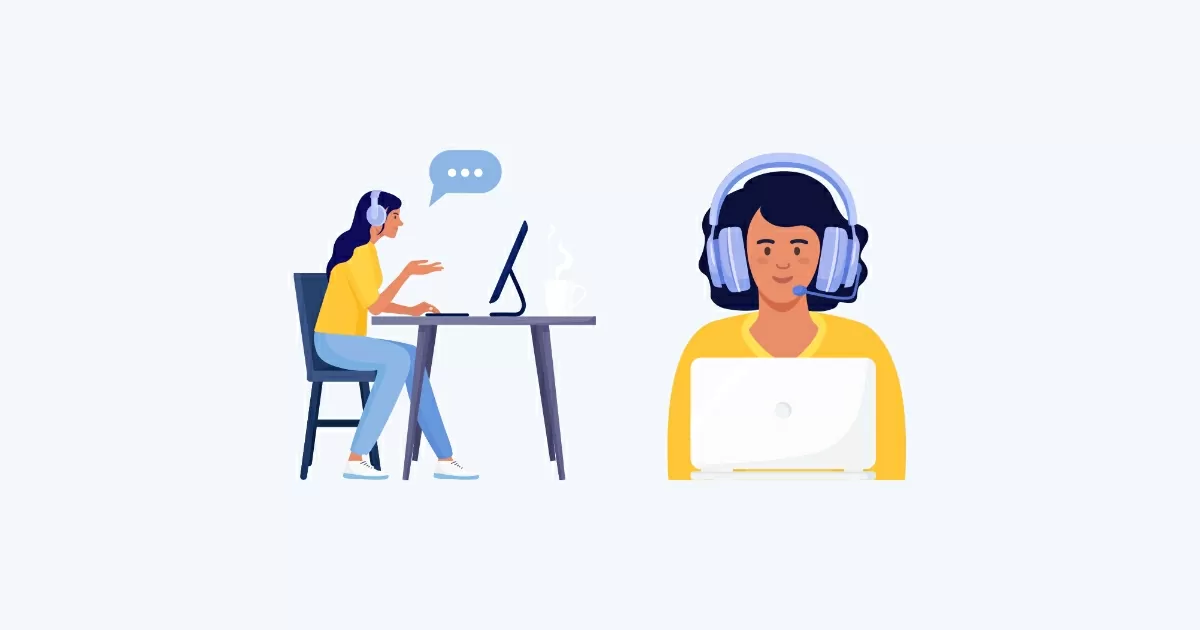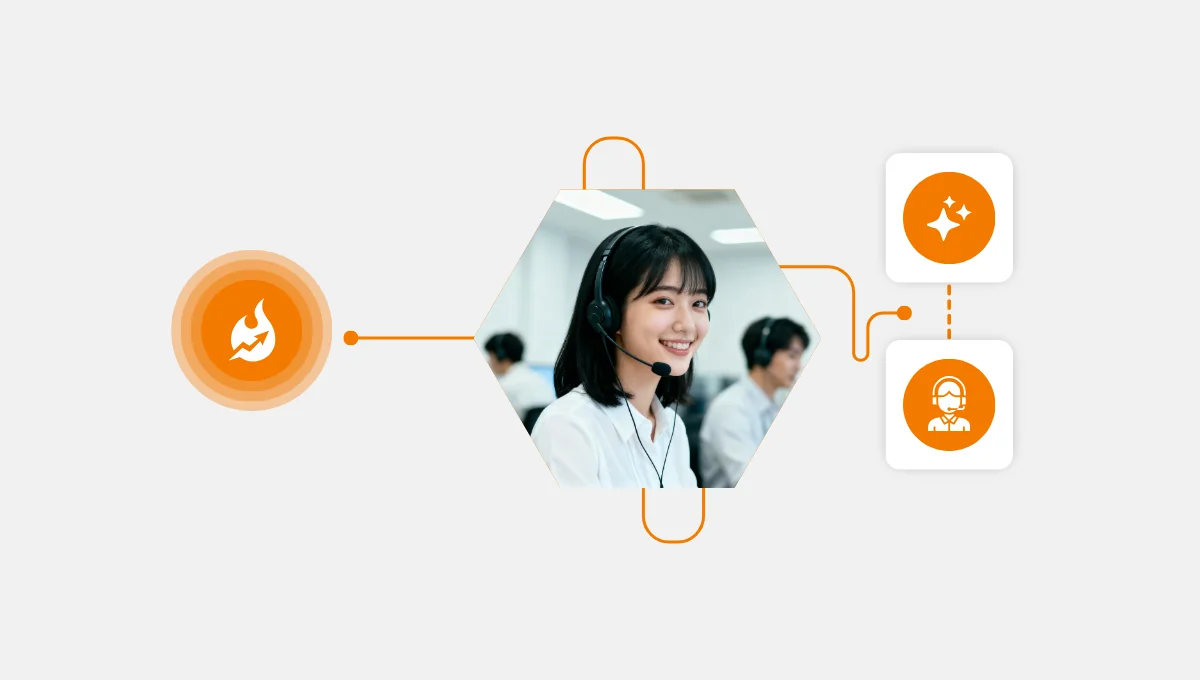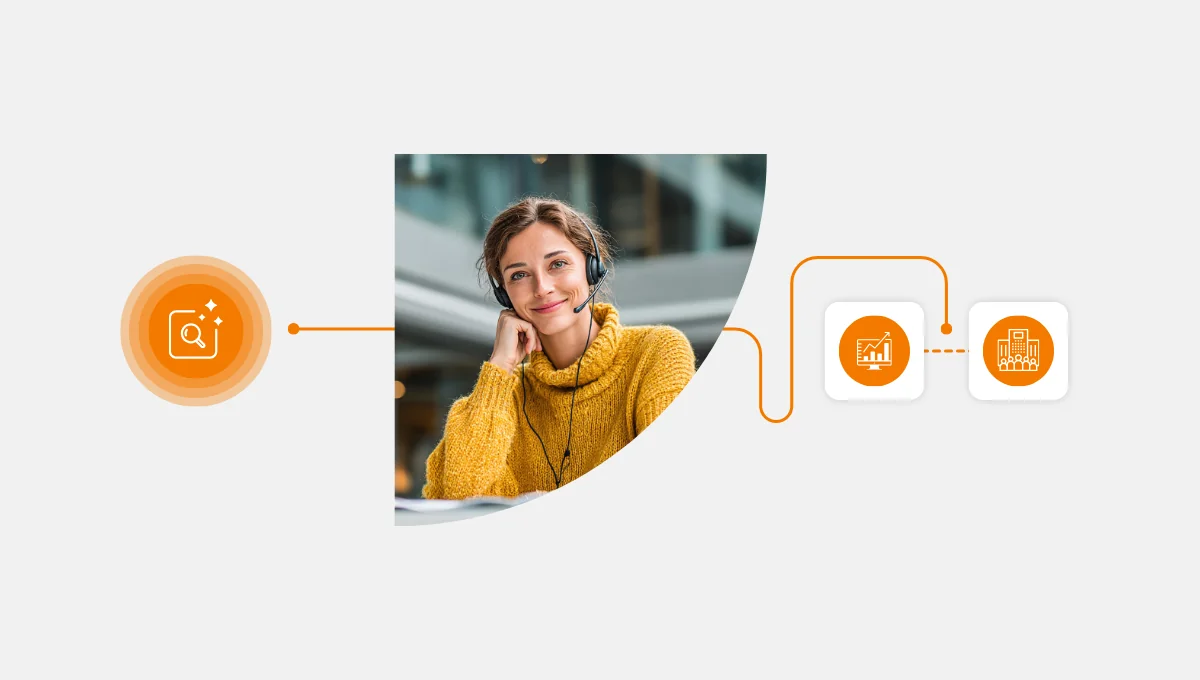Congratulations on your first call center agent job! We bet you’re excited to help people and are ready to start training. However, when your trainer uses acronyms like ACW, AHT, BPO, ASA, and ASR, you may start to feel a bit lost. Who knew call centers had so many acronyms? No need to worry; we have compiled a list of the most common call center abbreviations to prepare you for your first day.
As a bonus, we’ll tell you about Call Center Studio and how they can improve customer and agent experiences in your call centers.
To have a seamless career for you or the new hires at your cloud call center, you need to master the following most used acronyms.
ACW: After Call Work
ACW refers to the post-call work after a customer has hung up. This includes updating customer information, fixing a bug on your end, logging the call details, and making necessary notes.
AHT: Average Handle Time
AHT is the length of the average call. Reducing AHT is often a key performance indicator (KPI) for call center agents. This can increase your cloud call center’s efficiency and minimize customer wait times.
ASA: Average Speed of Answer
ASA records how long it takes a call center agent to answer a customer’s call. This is an important metric for customer satisfaction and affects the center’s efficiency and staffing needs.
ASR: Automatic Speech Recognition
ASR software prompts callers to answer certain questions to route the call to the appropriate agent. This is often used with interactive voice response (IVR) systems.
ATA: Average Time to Abandonment
ATA is the percentage of inbound phone calls made to a contact or cloud call center that get abandoned before being connected to an agent in real time. A high ATA can indicate understaffing, long wait times, or other issues that your center needs to address.
BIC: Best-in-Class
BIC refers to a superior product or call center within a specific market. A call center may strive to be BIC to attract more customers.

BPO: Business Process Outsourcing
The practice of outsourcing call center operations to a different vendor is known as BPO. Valor Global offers onshore and offshore support options, both options are cost-effective and reliable. BPO can help companies cut costs while still delivering top-notch customer service.
BUQS: Blended Universal Queue System
BUQS, also known as a universal queue (or U.S. for call center acronym purposes), integrates many channels used for customer communications, including phone, email, chat, and social media channels. A BUQS can help call centers operate customer interactions more efficiently.
CEM: Customer Experience Management
CEM is the technology that keeps customer information in one place and reflects real-time updates. It helps call center agents quickly find relevant information and deliver more satisfactory customer service.
CLI: Call Line Identity
CLI is a method by which inbound calls to a contact center identify caller information. It can help call center agents provide more personalized service and address customer needs more effectively.
CRM: Customer Relationship Management
CRM is software that manages customer interactions with agents and the company and data with current and potential customers. It can aid call center agents in providing exemplary customer service and tracking important metrics.
CSA: Customer Service Agent
CSA, or the call center acronym CSR, refers to those who engage directly with customers via phone, chat, email, or other platforms. They are the frontline of customer service and critical for customer satisfaction.
CSAT: Customer Satisfaction
CSAT is a post-engagement or post-call survey completed by customers to reveal their level of satisfaction with their agent. This is an important metric for customer satisfaction and can help call centers to improve their service.
CCaaS: Contact Center as a Service
This refers to a cloud-based contact center solution offering different communication channels such as phone, email, chat, and social media.
IVCI: Interactive Voice and Chat Interactions
A cloud-based solution that offers customers the option to chat while on a call with a customer service agent.
WFM: Workforce Management
This refers to software or processes that help to manage a cloud contact center workforce. This includes scheduling, forecasting, and real-time management.
PCI: Payment Card Industry
This acronym refers to security standards for processing credit card payments in a cloud contact center.
GDPR: General Data Protection Regulation
This is a regulation established by the European Union which governs how businesses handle and protect customer data. Your call center must adhere to these rules and not convey any sensitive information to third parties.
HIPAA: Health Insurance Portability and Accountability Act
A U.S. law that sets standards for the privacy and security of protected health information.
CX: Customer Experience
This refers to a customer’s experience with a cloud call center company, including all interactions and touchpoints.
NPS: Net Promoter Score
This indicator outlines customer happiness and loyalty, by asking customers if they would recommend a business to others.
CES: Customer Effort Score
This measures how easy it is for a customer to accomplish a specific task, such as placing an order or resolving an issue.
CTQ: Critical to Quality
This refers to the specific aspects of the call center process that are most important to the customer experience and must be closely monitored.
IVS: Interactive Voice Solutions
A technology that offers self-service options to customers, such as automated account balance inquiries or bill payments.
NCO: Non-Call Outcomes
This refers to the outcomes of a call center interaction that don’t involve a phone call, such as resolving a customer issue via email or chat.

Bottom Line
Navigating the call center acronyms can be challenging, notably for beginners. But with some practice, you can become a pro in no time. Meanwhile, Call Center Studio can streamline your call center operations, making it easier for your team to manage customer interactions and resolve issues. With its user-friendly interface and advanced features, your agents can handle more calls more efficiently. This results in higher customer satisfaction rates. Additionally, Call Center Studio’s real-time reporting and analytics can provide practical insights into your team’s performance. This will help you to make data-based decisions to enhance your operations.
As a call center agent, you have the power to make a real difference in people’s lives, and that’s something to be proud of. So keep learning, growing, and providing the best possible customer service. Good luck on your call center journey!




